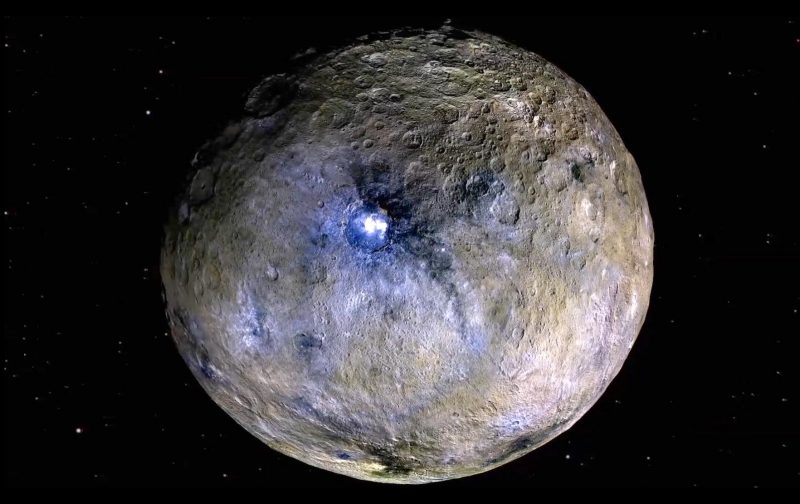
Ceres’ crust is probably made from 90% ice today. Using data from NASA’s Dawn mission, scientists found it was likely once a muddy ocean world.

Ceres, the largest asteroid in our solar system, harbors a dark secret: extremely young ice deposits in permanently shadowed craters near its poles.

By studying Ceres' gravity, scientists learned more about the dwarf planet's internal structure and were able to determine that the water reservoir is about 40 km deep and hundreds of km wide.

Dawn was launchd on 27 September 2007. The spacecraft found that asteroid Vesta is the parent of a specific variety of meteorites found on Earth. It also discovered that dwarf planet Ceres was once an ocean world.

A new analysis of data from NASA's Dawn mission suggests that organic matter may exist in surprisingly high concentrations on the dwarf planet's surface.

Starting in early June, Dawn will begin collecting gamma ray and neutron spectra to better understand the composition of the topmost rock and soil layers while taking high-resolution photographs of dwarf planet Ceres.

The cameras of the Dawn space probe discover water ice in Ceres' polar region. It can survive for aeons in the extreme cold traps, even though there is no atmosphere.

The new data indicates that while Ceres, which is the largest body in the asteroid belt, was once warm enough for water to have shifted internally, those temperatures were never high enough for an iron core to separate from the rest of the dwarf planet's interior.
Dwarf planet Ceres is shown in these false-color renderings, which highlight differences in surface materials. Images from NASA’s Dawn spacecraft were used to create a movie of Ceres rotating, followed by a flyover view of Occator Crater, home of Ceres’ brightest area.